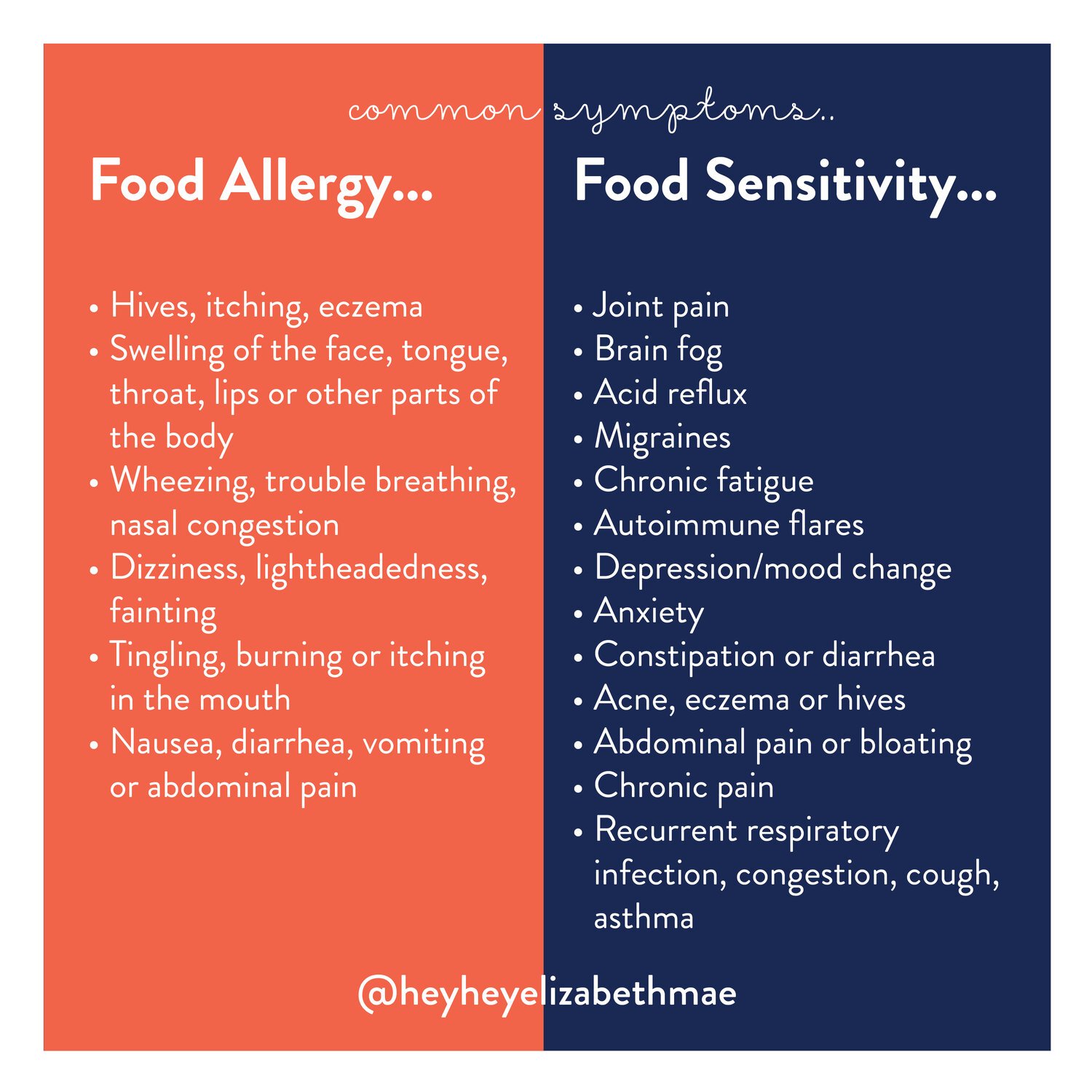Common Symptoms of Food Sensitivity vs. Allergy
It can be easy to lump food allergies and sensitivities together because both cause unwanted symptoms after eating a particular food item. With today’s standard diet and overconsumption of processed foods it is no wonder that adverse food reactions are on the rise. Most processed foods do not even resemble actual food and are at the root of many diseases we commonly see today.
There are two ways to define adverse food reactions -- those that elicit an immune response, and those that do not. Both food allergies and food sensitivities elicit an immune response. Food intolerances do not.
Someone with a food intolerance does not actively produce the necessary enzymes to break down the food substance (for example, a lactose intolerance). In the case of a lactose intolerance, when dairy is consumed: the lactose is digested by gut bacteria rather than being broken down by the enyzme lactase. This produces hydrogen gas that causes bloating, gas, distention, and abdominal pain.
Food allergies are a Type I reaction and involve an IgE antibody release. These reactions cause immediate symptoms after eating the food such as anaphylaxis, hives, breathing issues, severe swelling, and other symptoms. Those with a food allergy typically know the foods they are allergic to (peanuts, shellfish, etc.) and carry an epi-pen in case of an emergency. Because Type 1 food reactions are immediate, testing is not usually done to confirm.
Here is how a food allergy manifests: using a peanut for example, once ingested, T-cells in the body deem the peanut to be dangerous. Then, T-cells signal B-cells to produce IgE antibodies specifically against peanuts. B-cells begin producing IgE antibodies against the peanut. The IgE antibodies are pulled to mast cells in the tissues that are fixed on specific receptor sites that are now programmed against peanuts. When the peanut binds to IgE antibodies on the surface of that mast cell, it triggers the release of histamine and prostaglandins (hormone-like substances that regulate the body’s inflammation) which cause symptoms to occur.
Food allergies can cause symptoms such as:
Hives, itching, eczema
Swelling of the face, tongue, throat, lips, or other parts of the body
Wheezing, trouble breathing, or nasal congestion
Dizziness, lightheadedness, or fainting
Tingling, burning, or itching in the mouth
Nausea, diarrhea, vomiting, and abdominal pain
Food sensitivities can be classified as a Type III or Type IV food reaction. Type 3 food reactions are usually delayed reactions. Symptoms may start to appear up to three days after the ingestion of an offending food. Type 3 reactions create an immune complex, which is a chain of antibodies that attach to an antigen or antibody. These immune complexes form with IgM or IgG antibodies. IgM antibodies are released early in the reaction phase and then convert to IgG after a couple of weeks. Type IV food reactions are also usually delayed reactions. This type of reaction is cell-mediated and there are no antibodies triggered. T-cells are sensitized to a specific antigen that interact with granulocytes that cause the mediators to be released and symptoms to occur.
Food sensitivities can cause symptoms such as:
Joint pain
Brain fog
Acid reflux
Migraines
Chronic fatigue
Autoimmune flare ups
Depression or mood change
Anxiety
Constipation or diarrhea
Acne, eczema, or hives
Abdominal pain or bloating
Chronic pain
Recurring respiratory infection, cough, congestion, asthma
So what do you do about these sensitivities?
You can work to heal them! Great news, eh? There is likely a root cause to your sensitivity reactions. Maybe it’s leaky gut, perhaps you’re host to a parasite or a pathogen. Maybe your gut has too many of the “bad” bacteria growing and not enough of the “good” ones. It may be some sort of reaction to a medication you’re on, that has overtime assaulted your digestive tract - so many possibilities! Together, we work to dig for the cause and make use of a food sensitivity test - my fave is the MRT-170 food sensitivity test - and remove the offending foods, work to eradicate your root cause and bolster the body with healing nutrients and then repopulate the gut. The whole process requires an intensive 3 months and 6 months, total, before we can reintroduce all foods - clients have so much success at the 3-month mark of a protocol! What’s still causing a sensitivity reaction at 3 months, we remove for 3 more months, allow the digestive tract to keep healing and reintroduce (with great success!) at the 6-month mark.

